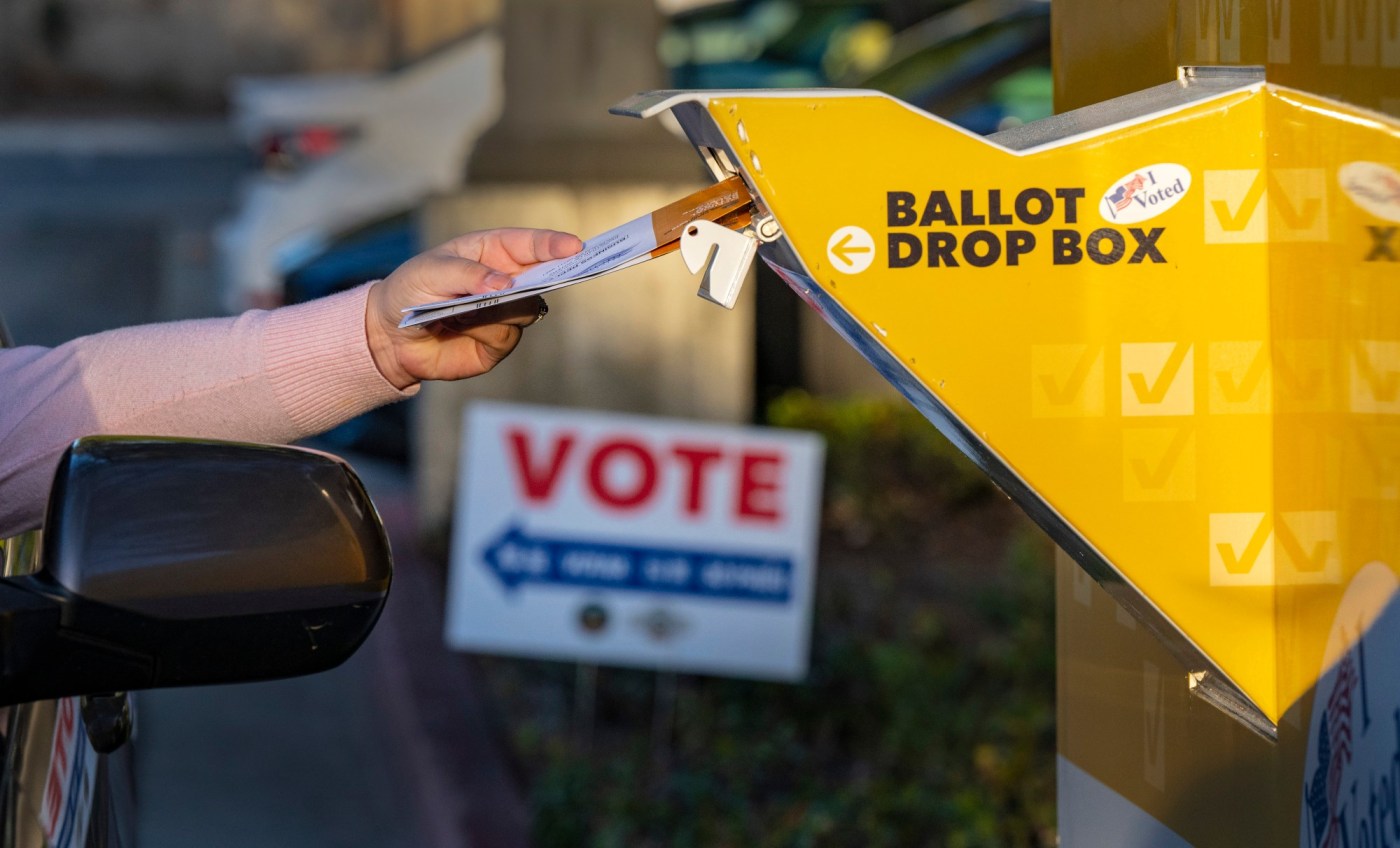Just four years after a record-setting 2020 general election, voter turnout across California dipped in 2024, a downturn that included Orange County.
Much of the drop-off came from one side of the political fence, as Democrats, racial minorities and younger voters who participated in 2020 were among those most likely to sit out in 2024, according to election data compiled by USC’s Center for Inclusive Democracy.
That doesn’t make California, or Orange County, unique. It also doesn’t mean the 2024 election wasn’t a high turnout election; it was one of the most popular elections of the past century.
But, according to data from the nonpartisan Pew Research Center, turnout last year was significantly lower than it was in 2020, in California and the nation, with many people who participated in the first election choosing to sit out the second.
Let’s break down the numbers:
Statewide, nearly 16 million out of 25.8 million eligible voters cast ballots in 2024, a turnout of 62%, the data showed. That ratio is well under 2020, when 71% of eligible voters (more than 17.8 million out of about 25 million eligible voters) cast ballots.
The same trend was seen in Orange County, though the drop-off was less pronounced.
Overall, more than 1.4 million of the 2.1 million people eligible to vote in the county cast a ballot last year, a turnout rate of 66.9%. In 2020, the county saw more than 1.54 million votes cast and a turnout rate of 77.3%.
Also, the total number of county residents who cast ballots in 2020 but not in 2024 — 209,000 voters — represented 15.6% of the electorate, slightly less than the statewide drop-off rate of 17.3%.
So, who skipped Election Day in Orange County last year?
“While we saw voter turnout gains in the 2020 elections, especially among California’s voters of color, this new study confirms a reversal of that progress,” said Mindy Romero, the study’s lead author and director of the Center for Inclusive Democracy, a nonpartisan research group at the USC Sol Price School of Public Policy.
“Sadly, participation in our democracy continues to be low and disparate across the board, and even more significant for voters of color and youth voters.”
Broken down by race and ethnicity, the study found 23.2% of Latino voters in Orange County who participated in 2020 stayed home in 2024. The drop-off rate was second highest for Asian American voters, at 20.1%, followed by Black voters at 15% and White voters at 10.4%.
Statewide findings were similar, though 19.6% of Black voters who cast ballots in 2020 stayed home in 2024.
Broken down by age, younger voters were more likely than older voters to skip the 2024 election after participating in 2020, a trend seen in Orange County and across the state.
In the county, when tracking results by age, the center found the drop-off rates were:
• 30% for voters between the ages of 18 and 24,
• 27.9% for voters between the ages of 25 and 34,
• 18.5% for voters between the ages of 35 and 44,
• 13.7% for voters between the ages of 45 and 54,
• 11.1% for voters between the ages of 55 and 64, and
• 9% for voters who were 65 and older.
By gender, the drop-off rates in Orange County were 16% for men and 15.2% for women.
Voters in the county who registered as Democrats, or who chose no party preference, were more likely than others to sit out 2024. The 2020-to-2024 drop-off rate for no party preference voters was about 23% and about 15.7% for registered Democrats, while Republicans saw a drop-off rate of about 11%. (The drop-off rate for voters registered in other parties was about 19.1%.)
Romero suggested the drop-off numbers are skewed, slightly, by context. Though voter turnout in ’24 was well under the record numbers seen during the pandemic-era election of 2020, it was still high when compared with many previous elections.
She added that’s small comfort for people who believe democracy and robust voter participation are linked.
“The story is still disappointing and concerning because, for most Americans, thinking about 2024, it still (was) a critical election. How could people sit it out?” Romero said.
“But I think we have to think about it the other way,” she added.
“There are barriers every election cycle. And in 2020, things came together to bring more people out, and we just lost some of those people in 2024.
“So we have to look at the consistent barriers that are always in place that 2020 was able to overcome in some way that 2024 wasn’t.”
A key takeaway, she said, is that lower turnout typically most affects historically underrepresented groups.
Even in a state where ballots are mailed directly to every registered voter and where many counties, including Orange, operate multi-service vote centers for several days prior to Election Day, Romero said “barriers to participation will affect underrepresented communities more.”
Her solution is for the state to push even harder on voter outreach.
While California has worked to boost voting access — with universal mailed ballots and online voter registration, for example — Romero said people in some groups feel disconnected to the electoral process and, because of that, they’re less likely to cast ballots.
“We need to do more to build trust and engagement in our electoral processes to reverse this trend,” Romero said.
You can find more of the Center for Inclusive Democracy’s election turnout data here.
